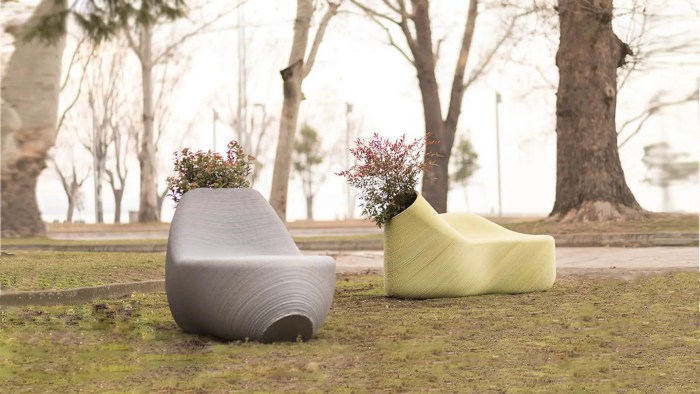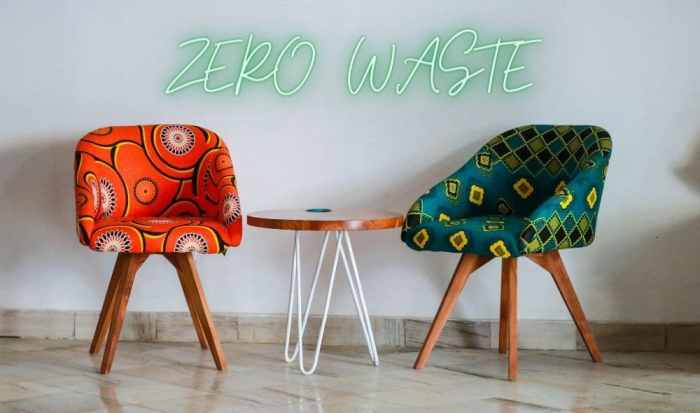Zero waste luxury furniture sets the stage for a compelling exploration of high-end design meeting environmental responsibility. This emerging trend challenges the traditional notion of luxury, demonstrating that opulence and sustainability can coexist harmoniously. We delve into the innovative materials, manufacturing processes, and design philosophies that define this exciting sector, highlighting the commitment to minimizing environmental impact without compromising on quality or aesthetic appeal.
The shift towards zero waste luxury furniture is driven by a growing consumer awareness of environmental issues and a desire for ethically sourced and produced goods. This movement showcases the potential for luxury brands to lead the way in sustainable practices, inspiring others to adopt more responsible approaches to production and consumption. From reclaimed wood to innovative bio-based materials, the possibilities are vast and constantly evolving.
The luxury furniture market is undergoing a significant transformation, driven by a growing awareness of environmental responsibility and the desire for sustainable living. Zero waste luxury furniture represents the pinnacle of this movement, combining exquisite craftsmanship, premium materials, and a commitment to minimizing environmental impact throughout the entire lifecycle of the product. This article delves into the intricacies of this burgeoning sector, exploring its defining characteristics, benefits, challenges, and future prospects.
Understanding Zero Waste Principles in Furniture Making
Zero waste, in the context of furniture manufacturing, goes beyond simply recycling scraps. It’s a holistic approach that aims to eliminate waste at every stage of production, from design and material sourcing to manufacturing, packaging, and end-of-life management. This requires a fundamental shift in thinking, moving away from a linear “take-make-dispose” model towards a circular economy where resources are valued and reused.
Key Principles of Zero Waste Luxury Furniture Production:
- Sustainable Sourcing: Utilizing responsibly harvested timber, recycled materials (e.g., reclaimed wood, upcycled fabrics), and locally sourced components to reduce transportation emissions and support local economies.
- Minimalist Design: Creating furniture with clean lines and simple forms to reduce material usage and complexity in manufacturing. This often results in pieces that are both elegant and durable.
- Precision Cutting and Manufacturing: Employing advanced technologies like Computer Numerical Control (CNC) machinery to minimize material waste during the cutting and shaping processes. Careful planning and design are crucial here.
- Creative Waste Management: Transforming leftover materials into smaller items, using scraps for inlay work, or donating them to other craftspeople or artists. Nothing goes to waste.
- Durable Construction: Building furniture designed to last for generations, reducing the need for frequent replacements. High-quality materials and robust construction techniques are paramount.
- Biodegradable and Compostable Packaging: Avoiding excessive packaging and opting for eco-friendly, biodegradable alternatives wherever possible. This reduces landfill waste and protects the environment.
- End-of-Life Management: Designing furniture for easy disassembly and component reuse or recycling at the end of its lifespan. This ensures that materials can be recovered and repurposed.
Materials Used in Zero Waste Luxury Furniture
The choice of materials is crucial in achieving zero waste. Luxury doesn’t necessitate unsustainable practices. Many high-end pieces utilize:
Sustainable Timber Options:
- FSC-Certified Wood: Forest Stewardship Council certification ensures that timber comes from responsibly managed forests.
- Reclaimed Wood: Salvaged wood from old buildings or structures gives character and reduces demand for newly harvested timber.
- Bamboo: A rapidly renewable resource that’s strong, durable, and aesthetically pleasing.
Recycled and Upcycled Materials:
- Recycled Metal: Steel, aluminum, and other metals can be melted down and reused, reducing the need for virgin materials.
- Upcycled Fabrics: Giving new life to old textiles, such as vintage fabrics or discarded clothing, adds unique character and reduces textile waste.
- Recycled Plastics (with caution): Some manufacturers are exploring the use of recycled plastics, but careful consideration must be given to the environmental impact of plastic production and recycling.
Benefits of Choosing Zero Waste Luxury Furniture
The appeal of zero waste luxury furniture extends beyond its aesthetic qualities. It offers a multitude of benefits:
- Environmental Responsibility: Reduces your carbon footprint and contributes to a more sustainable future.
- Enhanced Durability and Longevity: High-quality materials and construction result in furniture built to last.
- Unique Character and Style: Reclaimed materials and sustainable sourcing often lead to pieces with unique character and stories.
- Support for Ethical Practices: Choosing zero waste furniture supports businesses committed to ethical and sustainable practices.
- Increased Resale Value: Well-made, sustainable furniture often holds its value better over time.
Challenges in the Zero Waste Luxury Furniture Market
Despite the growing demand, the zero waste luxury furniture market faces several challenges:
- Higher Production Costs: Sourcing sustainable materials and employing meticulous craftsmanship can be more expensive than using conventional methods.
- Limited Availability: The number of manufacturers committed to zero waste practices is still relatively small.
- Consumer Education: Raising awareness among consumers about the benefits of zero waste furniture and dispelling misconceptions about cost and quality is essential.
- Supply Chain Complexity: Tracing materials and ensuring ethical sourcing throughout the entire supply chain can be complex.
The Future of Zero Waste Luxury Furniture
The future looks bright for zero waste luxury furniture. As consumer awareness grows and technology advances, we can expect:
- Increased Innovation in Materials: New sustainable materials and manufacturing processes will continue to emerge.
- Greater Transparency and Traceability: Consumers will demand greater transparency regarding the origin and lifecycle of their furniture.
- Expansion of the Market: More manufacturers will embrace zero waste principles, making sustainable luxury furniture more accessible.
- Integration of Circular Economy Models: Furniture will be designed for disassembly, reuse, and recycling, closing the loop on resource consumption.
Frequently Asked Questions (FAQ)
- Q: Is zero waste luxury furniture more expensive? A: Generally, yes, due to the higher cost of sustainable materials and labor-intensive production methods. However, the long-term value and reduced environmental impact often justify the investment.
- Q: Where can I find zero waste luxury furniture? A: Look for manufacturers and retailers who explicitly highlight their commitment to sustainability and zero waste practices. Online searches and specialized design websites are good starting points.
- Q: How can I tell if a piece of furniture is truly zero waste? A: Look for certifications like FSC for timber, information about material sourcing and manufacturing processes, and details on end-of-life management.
- Q: What is the difference between zero waste and sustainable furniture? A: While all zero waste furniture is sustainable, not all sustainable furniture is zero waste. Zero waste goes further by aiming to eliminate all waste at every stage of production.
- Q: Can I repair zero waste furniture? A: Yes! Many zero waste pieces are designed for durability and repairability, extending their lifespan and reducing waste.
Call to Action
Embrace the future of luxury by choosing zero waste furniture. Invest in pieces that are beautiful, durable, and environmentally responsible. Support businesses committed to sustainability and help create a more sustainable future for the luxury furniture industry. Explore our collection of ethically sourced, zero-waste luxury furniture today!

FAQ Guide
What materials are commonly used in zero waste luxury furniture?
Reclaimed wood, recycled metals, sustainably harvested bamboo, and innovative bio-based materials are frequently utilized.
Is zero waste luxury furniture more expensive than conventionally made furniture?
Often, yes, due to the higher cost of sustainable materials and ethical manufacturing processes. However, the increased durability and longevity can offset this over time.

How can I identify truly zero waste luxury furniture?
Look for certifications (e.g., FSC for wood), transparency in sourcing and manufacturing, and brands committed to ethical and environmental responsibility. Independent verification is also beneficial.
